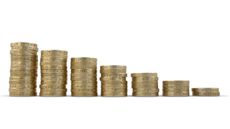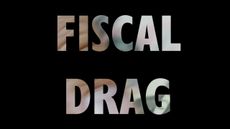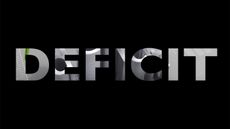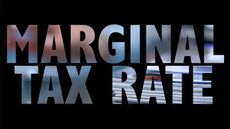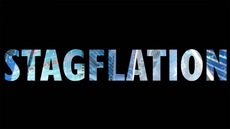I wish I knew what an ETF was, but I’m too embarrassed to ask
Many investors use ETFs, or exchange-traded funds, as part of a passive investment strategy. But what exactly is an ETF?
The acronym ETF stands for exchange-traded fund. And that pretty much sums up what it is. It’s a fund that is bought and sold on a stock exchange.
Most ETFs are passive funds. In other words, they aim to track the performance of a specific asset or stockmarket index, such as the FTSE 100 in the UK, or the S&P 500 in the US.
There are two main ways in which ETFs do this. Physical ETFs simply own the same assets as the index they are aiming to track. So a physical FTSE 100 tracker would own all the shares in the FTSE 100 in the same proportion as in the underlying index.
Subscribe to MoneyWeek
Subscribe to MoneyWeek today and get your first six magazine issues absolutely FREE

Sign up to Money Morning
Don't miss the latest investment and personal finances news, market analysis, plus money-saving tips with our free twice-daily newsletter
Don't miss the latest investment and personal finances news, market analysis, plus money-saving tips with our free twice-daily newsletter
Synthetic ETFs instead use financial instruments called derivatives to copy the returns on the underlying market, without having to own the physical assets at all. Synthetic ETFs still have to be backed by collateral, but the use of derivatives introduces counterparty risk. That is, the danger – however small – that the investment bank which underwrites the derivative might be unable to pay out.
ETFs are not limited to tracking stock indexes. There are ETFs and ETF-style products available to track the price of anything from individual commodities to bond indexes to currency markets to “themes” such as robotics and AI, or cannabis stocks.
If you are considering investing in an ETF, you can get an idea of how efficiently it tracks the underlying asset by looking at the “tracking error”, which simply measures the gap between the return on the ETF and the return that it’s supposed to be matching. The narrower, the better. You should also – as always - look at how much the ETF costs in terms of annual fees and trading costs.
So why might you use an ETF rather than a traditional open-ended fund, or an investment trust? The big difference between an ETF and an open-ended fund is that an ETF is listed, and so can be bought or sold throughout the trading day.
The big difference between ETFs and investment trusts – or closed-ended funds – is that while both are listed on stock exchanges, an ETF should – except in exceptional circumstances – always track the value of its underlying assets very closely. An investment trust, by contrast, can trade at a premium or a discount to the value of its underlying portfolio.
To find out more about ETFs, subscribe to MoneyWeek magazine.
-
-
 Investment trust discounts hit 2008 levels. Here’s how to profit
Investment trust discounts hit 2008 levels. Here’s how to profitInvestment trust discounts have risen to levels not seen since 2008, here are three trusts looking to buy to profit.
By Rupert Hargreaves Published
-
 A luxury stock to buy at a high street price
A luxury stock to buy at a high street priceInvestors wrongly consider Watches of Switzerland a high-street outlet.
By Dr Matthew Partridge Published
-
What is an investment trust?
Videos “Active” investment funds come in two main varieties, one of which is investment trusts. But what exactly is an investment trust?
By Rupert Hargreaves Published
-
 What is a dividend yield?
What is a dividend yield?Videos Learn what a dividend yield is and what it can tell investors about a company's plans to return profits to its investors.
By Rupert Hargreaves Published
-
 High earners to pay nearly £2000 more in tax due to fiscal drag
High earners to pay nearly £2000 more in tax due to fiscal dragVideos The government froze tax thresholds, which will drag employees into higher tax bands as wages rise with inflation. We explain what fiscal drag is, and how to avoid it.
By Nicole García Mérida Last updated
-
 What is a deficit?
What is a deficit?Videos When we talk about government spending and the public finances, we often hear the word ‘deficit’ being used. But what is a deficit, and why does it matter?
By moneyweek Published
-
 Too embarrassed to ask: what is moral hazard?
Too embarrassed to ask: what is moral hazard?Videos The term “moral hazard” comes from the insurance industry in the 18th century. But what does it mean today?
By moneyweek Published
-
 Too embarrassed to ask: what is contagion?
Too embarrassed to ask: what is contagion?Videos Most of us probably know what “contagion” is in a biological sense. But it also crops up in financial markets. Here's what it means.
By moneyweek Published
-
 Too embarrassed to ask: what is a marginal tax rate?
Too embarrassed to ask: what is a marginal tax rate?Videos Your marginal tax rate is simply the tax rate you pay on each extra pound of income you earn. Here's how that works.
By moneyweek Published
-
 Too embarrassed to ask: what is stagflation?
Too embarrassed to ask: what is stagflation?Videos Traditionally, economists and central bankers worry about inflation or recession. But there is one thing worse than both: stagflation. Here's what it is
By moneyweek Published


